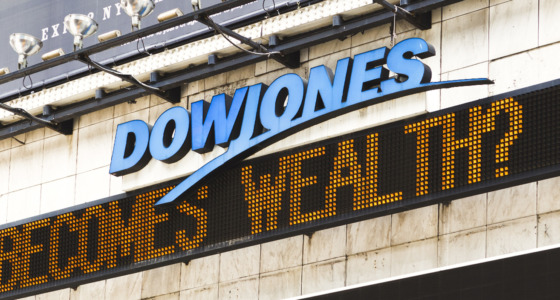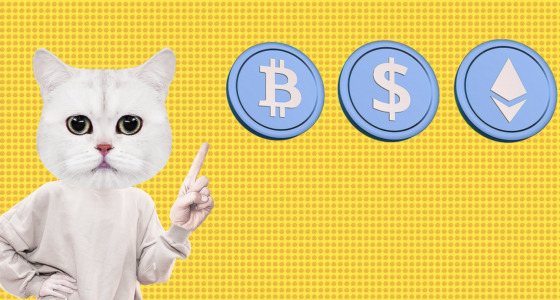

In 1987, trading on the Nasdaq stock exchange was stopped by… a squirrel!
A common squirrel accidentally damaged the power grid in Trumbull, Connecticut, interrupting the Nasdaq automated quotes system for an entire 82 minutes.
Normally, though, the operating schedule of stock exchanges, even online, is tied to the operation hours of offline exchanges. That’s why traders sometimes have to deal with site unavailability and asset prices freezing up – rates aren’t updated during downtime. In most cases, traders and investors are used to these breaks, and some even actively use them in their work.
How stock exchanges work
In each region, exchanges work according to their own schedule, depending on the time zone and the rules of the country.
Stock markets are typically open from Monday to Friday, with Saturday and Sunday as days off. In Asia, there is also a lunch break. Also, exchanges don’t work on national holidays, memorial and mourning dates, specific to each country:
- Asian sessions close for Lunar New Year;
- European exchanges are closed on Christmas and Boxing Day;
- There’s no trading in the USA on Black Friday;
- European and Japanese exchanges close early on New Year’s Eve for a short holiday.
- Additional days off may be added by state decrees in connection with major events in the country or region.
What time does the stock market open and close?
U.S. stock exchanges, especially larger and more important ones, are always available for trading during business hours throughout the week. From Monday to Friday, traders can spend their time applying their trading strategies accordingly. On every weekday, trading will begin at 9:30 AM, with everything closing at 4 PM.
The New York Stock Exchange has the “opening bell”. There are actually two bells that signal that the market has opened. The initial bell is an automated one, whereas the second is a physical one.
The NASDAQ opens at the same time as NYSE, but it has no trading floor. And while the opening of the market for the day is represented by the bell, there is no actual bell that rings there.
Most people trade during normal hours, but there are also some individuals who decide to trade before the time begins. This is known as pre-market trading, and it takes place before the opening bell.
However, people cannot trade during weekends. Whereas the Internet allows you to do pretty much anything at any hour, trading stocks on the weekends is not a possibility. This is because the weekends are used to keep panic away and deal with issues during financial crisis times. Moreover, stockbrokers were unable to work around the clock before technology became more widespread. Therefore, the closing during the weekends allowed them to take some time off and breathe.
Can you trade stocks after hours?
It is possible to trade stocks after hours. Extended-hours trading is available for traders from Monday to Friday between 4 PM and 6:30 PM EST. These hours apply for the NASDAQ and the New York Stock Exchange.
While trading stocks after hours is possible, there are a few factors to keep in mind. For instance, there is some market volatility involved, just like with pre-market trading. Before you begin extended-hour trading, you should be aware of this aspect.
Most of the time, after-hours trading sounds very convenient for many traders. At the same time, it is quite unpredictable, mainly due to the problems that may arise. For this reason, trading during regular hours is the safest option. It allows you to stay away from risks while having control over buying and selling stocks and having peace of mind.

Stock market holidays
During holidays, the stock market is closed. So, you will not be able to perform your usual trading activity during these days. Some stock market holidays are:
· Memorial Day
· President’s Day
· Christmas Day
· New Years Day
· Thanksgiving Day
· Labor Day
· Martin Luther King Jr. Day
· Good Friday
· Independence Day (July 4th)
Aside from the stock market holidays, there are also some U.S. stock exchange trading days that are shortened. These include:
· Christmas Eve – You can trade from 9:30 AM to 1 PM EST
· Black Friday – Trading can occur between 9:30 AM and 1 PM EST
· July 3rd – You can trade from 9:30 AM to 1 PM EST
Cryptocurrency market hours
The cryptocurrency market is a bit different from the normal stock market. This is because when it comes to its market hours, you can trade at all times. The cryptocurrency market runs 24/7, so you can trade even during holidays if you wish so.
Although convenient to some extent, this can also be a bit risky. If you sleep, there may be several changes that happen to the market, affecting your strategy and results. Furthermore, there is no downtime, which means you must come up with a good strategy and plan for every situation. This makes it a bit more demanding.
Trading session schedule
The trading session is the time of the physical work of the exchange. But in practice, auctions are held both before the opening and after.
In addition to the local schedule of each specific exchange, there are four general trading sessions:
- Pacific – 9 pm to 6 am (UTC);
- Asian – 12 am to 9 am (UTC);
- European – 7 am to 4 pm (UTC);
- American – 1 pm to 10 pm (UTC).
Session operation hours do overlap. The trading robot closes orders on one exchange and instantly opens them on another. This is one of the things that helps to avoid sharp jumps. In addition to the actual session hours, there are the pre-market and post-market periods. All orders collected during these periods fall into the Depth of Market, where orders that match the buy and sell prices are executed.
The need for premarket trading is explained by the typical trading chaos within the first minutes of the exchange opening. If there were news or reports during the night or during the weekend for any issuer that disappointed the investors, the beginning of the trading session will create a major burden on the exchange from the piled-up sales orders. In order to clear out these orders, reducing the load on the data center, some of them are completed during premarket trading, and the rest are transferred to the main session time. If you’d like to know when the stock market closes, it’s easiest to refer to our table above.
Emergency trading halt – why is it necessary
Stopping trading immediately after the opening or in the middle of the working day is a kind of a circuit breaker is supposed to save the market from chaos. This measure is used rarely, since it is a reason for panic in itself. The decision is not made spontaneously, there is a prescribed algorithm for most platforms. The halt occurs automatically, and does not require human intervention.
This measure was initially put in place was after the 23% crash of the Dow Jones in October 1987. More detailed rules were developed after the instant crash on the NYSE in May 2010 (Flash Crash). The exchange adopted the latest version of the rules in February 2013. It’s a three-tier system, and if the S&P 500 index falls by 7%, 13% or 20%, respectively, trading stops for 15 minutes. If the third threshold is exceeded, trading will stop until the end of the day.
A similar mechanism exists on every exchange in the world. Securities price fluctuations are considered significant after a 7-10% drop, which is where these measures begin to be implemented.
The option of manual trading suspension is reserved by all exchanges – this extreme measure is prescribed in the US securities law and in the statutory documents of the Securities and Exchange Commission (SEC). Officially, this is done to protect the interests of investors. The longest trading halt in US history occurred on September 11-17, 2001. The cause was the notorious terrorist attack. In the very first minutes after the release of the news, all indices fell by more than 10%, but the decision to close the exchange was made by the administration. This helped to avoid a massive dumping of assets and allowed the market to stay afloat.
In any case, the circuit breaker mechanisms are used regularly, if not often. They are an emergency method for the exchanges to keep operating, and not necessarily a sign of financial disaster.








